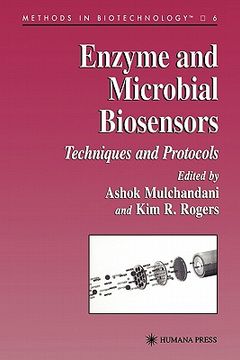Share
enzyme and microbial biosensors: techniques and protocols
Ashok Mulchandani
(Illustrated by)
·
Kim Rogers
(Illustrated by)
·
Humana
· Paperback
enzyme and microbial biosensors: techniques and protocols - Mulchandani, Ashok ; Rogers, Kim
Choose the list to add your product or create one New List
✓ Product added successfully to the Wishlist.
Go to My Wishlists
Origin: U.S.A.
(Import costs included in the price)
It will be shipped from our warehouse between
Friday, July 12 and
Friday, July 19.
You will receive it anywhere in United Kingdom between 1 and 3 business days after shipment.
Synopsis "enzyme and microbial biosensors: techniques and protocols"
In 1962 Clark and Lyons pioneered the concept of a biosensor. They p- posed immobilizing enzymes at electrochemical detectors to form "enzyme el- trodes" in order to expand the analyte range of ther base sensor. Smce then, the field of blosensors has greatly expanded. Some of the reasons for the expansion include both advances in signal transduction technologies and the incorporation of different biological sensing elements (Table 1). As a consequence, there are now a bewildering array of permutations of the biological sensing element and signal transducers that can be used to c- struct a biosensor. The purpose of the two volumes of Protocols and Te- niques in Biosensors is to provide a basic reference tool and starting point for use by graduate students, postdoctoral and senior researchers, and technicians m academics, industry, and government research establishments, to enable rapid entry into the field of biosensors. There are a variety of approaches that researchers employ to select a combination of bioaffinity elements and signal transducers. One commonly used approach is to identtfy the compound or compounds of interest; identify the biological molecule that yields an appropriate recognitionlselectivtty and dynamic concentration range for the assay; and choose an assay format and signal transduction technology that will meet the analytical requirements for the proposed application, This volume, Enzyme and Microbial Biosensors: Techniques and Protocols, describes a variety of transduction technologies that have been interfaced to enzymes and microorganisms.
- 0% (0)
- 0% (0)
- 0% (0)
- 0% (0)
- 0% (0)
All books in our catalog are Original.
The book is written in English.
The binding of this edition is Paperback.
✓ Producto agregado correctamente al carro, Ir a Pagar.

